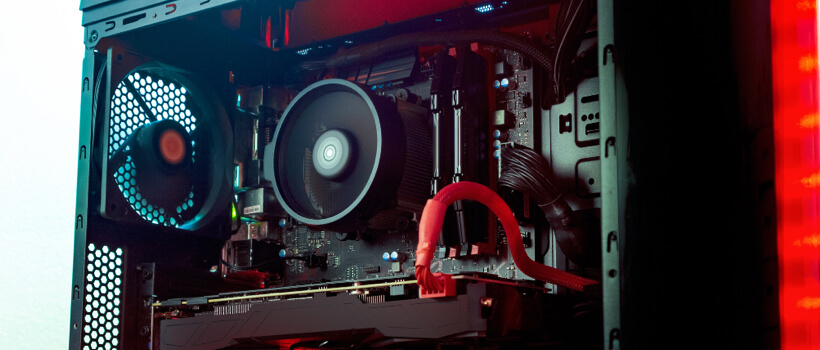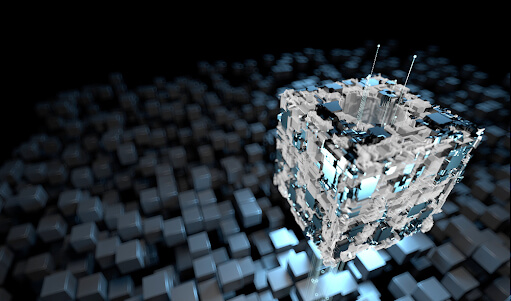 1-800-805-5783
1-800-805-5783 
The mushrooming of online games over the last decade has led to the demand for more competitive and secure online gaming platforms. The ease with which users can play, access secure assets, and easily transact without much latency necessitated the development of online gaming software. It has been noticed that Users started showing more interest and enthusiasm in online gaming in recent years. This can be attributed to rapidly developing technologies like Artificial Intelligence, Augmented Reality, and Virtual reality. To stay competitive in the market, which is undergoing drastic changes every day with changing technologies, the gaming industry is always looking for easier and safer solutions that can sustain the competition in the long run. Blockchain technology is proving to make disruptive advancements in the gaming industry. When blockchain technology is teamed with AI and VR, it can revolutionize gaming and take it into new dimensions.
A few ways in which gaming can become more competitive and popular is by grabbing customer attraction and then inventing innovative methods to retain customers. To do this, Blockchain, which uses Distributed Ledger Technologies (DLT), might offer the best solution by expanding the gaming ecosystem and diversifying gaming, improving the monetization of secure gaming assets, providing facilities like customized advertisements, etc. Since a permissioned Blockchain network offers low cost and throughput without much latency, and a permissionless Blockchain network offers immutability and transparency, they can be securely used for gaming software for unknown customer interactions and trusted user interactions in gaming.
Gaming with Blockchain has come a long way since the first of its sought, i.e., CryptoKitties. After being launched in 2017, this game had around 40000 players per day, and the blockchain technology used in this game was using the Ethereum network to run the game. But this game was considered expensive. It showed transactional delays, but the performance could still be improved. It also had some scalability issues. Now, many blockchain-based gambling games, online casinos, trading online games, etc., are being played extensively by users across the globe.

Over the past few years, it has been proven that Gaming is no longer an entertainment activity alone that is done for fun. Still, it is a rapidly growing industry estimated to be worth about 138 billion USD in 2019. The Olympic committee is contemplating introducing eSports in the 2024 Olympics, as the Asian Games have already introduced eSports into their competitive program in the Asian games held in 2020. The projected revenue through online gaming is about 2.96 Billion USD by the end of 2022.
CloudArcade
According to the ACM digital library report of 2020 CloudArcade, a gaming system developed using Blockchain architecture, the ‘spot price’ of gaming assets used in the dynamic pricing model was replaced with Cryptocurrency. This replacement enabled the user to use a transparent resource-aware payment method, increasing gaming performance.
GiNA
According to the report published by IEEE international conference on Communication dated 14-23 June 2021, GiNA is a type of packet transfer scheme which is used in the Peer-to-Peer (P2P) gaming models, which makes sure that the data transfer in this type of gaming models is secure and authenticate. In this model, peers (gaming users) can buy gaming assets through ‘ Gicoins,’ which comply with the ERC 20 token of Ethereum. The results have proven to overcome gaming challenges like scalability, performance, packet loss percentage, latency, etc.
What is crowd-sensing technology, and how can gaming technology change exponentially to create public awareness about any social issue?
The concept of bringing awareness on public environmental issues, like water contamination, soil degradation, etc., can be better addressed through gaming platforms, which can be both entertaining and informative. Mobile crowd sensing through gaming can help give roles, identify specific problem areas, and validate solutions through gaming tasks. A Blockchain model devised on the Hyperledger Fabric Architecture can help to a large extent in inducing the component of trust amongst the various users of the mobile cloud sensing platform.
Since online gaming has increased internet traffic by 7 million bytes per month and data is controlled by centralized cloud agencies and game creators, latency and security have become the biggest challenges of eSports. So, there is an urgent need for a decentralized gaming platform with Blockchain technology. The blockchain technology used with mobile crowdsensing and gaming can reap the benefits of gaming to enhance environmental awareness as well. Blockchain technological advancements in gaming are very promising as they will greatly reduce gaming latency to a large extent, making gaming experiences feel like real experiences.
Tags: Blockchain, Blockchaingaming